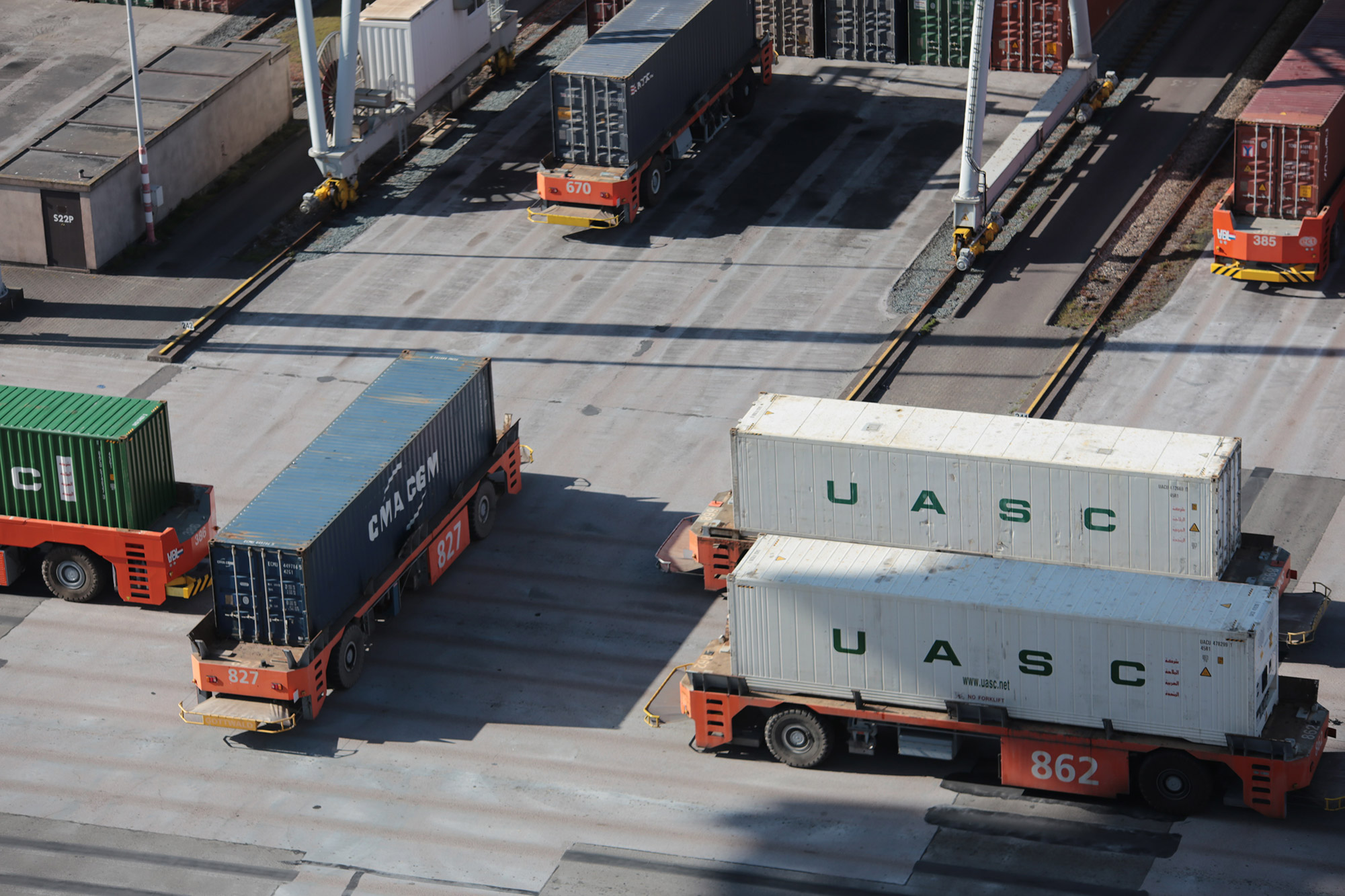
How can collaborative efforts in an industrial area improve resource wisdom?

Freight cooperation solutions for reducing the environmental impact of logistics
freight cooperation, cooperation, fill rate, freight logistics, driving arrangements, ecosystem, optimisation, rationalisation
Operators located in an industrial area can reduce their environmental impact by merging and centralising their freight logistics solutions. This also brings about operational benefits as higher volumes are an advantage in tendering processes, a comprehensive solution means a lighter workload and a joint solution for the industrial area is a more efficient operating model.
- Economy: freight cooperation needs to support climate goals but it also needs to be profitable.
- Commitment: companies need to be committed to their freight cooperation solution, which represents a collaborative economy used for the purposes of purchases.
- Needs: there are synergy benefits but also different needs, and these have to be incorporated into a functioning system.
This solution is right for you if
- you are interested in ways to reduce emissions from your company’s freight logistics;
- your company is located in an area where there are many other companies with similar freight logistics requirements;
- you represent a company focused on freight transport and logistics and want to offer carbon reduction solutions to your customers.
BASIC FACTS
- A freight cooperation system is suitable for companies that are geographically close to each other and have similar needs in terms of freight transport.
- It can be implemented in industrial areas that are in the planning, construction, development or active phase of their life cycle.
- The concept of freight cooperation has been implemented within the framework of futures research. Its practical applications require industrial area- and partner-specific assessment and implementation.
- The concept is implemented by:
- University of Turku, Finland Futures Research Centre (FFRC), Essi Silvonen
- The HNRY project’s transport and logistics solutions forums
- Practical applications have been evaluated in cooperation with Post Nord Oy
Freight transport cooperation challenges the mainstream operating model
In terms of palletised and parcelled goods and parcel traffic, outbound goods are most commonly picked up by transport companies and delivered to the nearest terminal every day. They are then transported to the terminal closest to the destination in the evening and at night, then distributed to their recipients.
Line haul loads tend to have a high fill rate, so they are quite highly optimised in terms of environmental impact and pricing. The collection and distribution of cargo generates more emissions.
There are two ways to enhance carbon neutrality and resource wisdom: 1) by reducing emissions from the fleet; and 2) by optimising operations, which is done by improving the fleet’s utilisation rate and reducing the total mileage. The concept of freight cooperation in an industrial area was developed to challenge the model generally used for transporting goods, in which each company independently invites tenders for its freight transport solutions. The challenge starts by connecting buyers to optimise operations, increase utilisation rates and reduce mileage.
Outbound operations are easy to optimise, but the model needs to be assessed at the system level
The idea for outbound freight is that companies located in an industrial area negotiate a centralised agreement with one transport company, which picks up the goods from all companies in the area in a way that achieves the optimal fill rate. This reduces heavy traffic in the area and has a direct impact on reducing emissions. Companies in the area can also explore the advantages of having a central logistics point/terminal and its suitability for their operations. This allows outbound and inbound freight traffic to be directed to a single destination in the area, and it also reduces lorry traffic. This “first mile” idea is relatively easy to implement, but the situation requires a more comprehensive assessment, both at the industrial area level as well as the district level, so that optimising the operations in one area or of one transport company does not have negative impacts at the system level.
The more challenging aspects of freight cooperation require solutions for their practical implementation
The concept is more complex for incoming freight as various transport companies carry out a large number of deliveries. Transport companies try to combine deliveries but it is difficult in practice due to loading orders, service requirements and schedules. Optimising the system for the transport of outbound and inbound freight may, however, have a significant impact on the mileage, but it requires the development of cooperation between transport companies and service requirements, for example.
Cooperation between transport companies would make it possible for one company to distribute incoming freight to an industrial area if the company selected also picked up the freight from the terminals of the other transport companies. Competition legislation on what information can be shared may also make it more difficult for transport companies to promote this idea. One possible solution would be a separate operator responsible for picking up and distributing goods in the industrial area or a company that specialises in providing climate-friendly transport services.
Freight cooperation solutions have a significant impact on the emissions and attractiveness of an industrial area
The aim of the freight cooperation concept is to save energy/fuel, carry out freight transport operations with the lowest possible mileage and reduce the number of heavy vehicles passing through an industrial area, which makes the area more attractive and safer while reducing noise.
The effectiveness of the concept can be measured by the daily fill rate and mileage of delivery vehicles. It can also be determined how much of the freight that is distributed in fuel-powered vehicles could be transported in electric or human-powered vehicles. The cooperation also allows smaller companies to benefit from larger volumes, giving them a better bargaining position in negotiations with transport companies.
Freight cooperation exploits synergies, or the needs shared by companies, and it is applied to the principles of sharing so that the resource to be shared and optimised is the freight transport capacity; the aim is to maximise the fill load of individual transport vehicles and, consequently, reduce the climate and cost impacts of an individual delivery.
TAKE-HOME MESSAGES
- Trade fair logistics is a good example of a practical application based on this idea: one partner is typically selected to provide all services in an area.
- The development of an operating model based on the idea of freight cooperation can also work in logistics operations in cities and construction sites when the aim is to reduce heavy traffic in urban areas.
- The service promise to the customer is a central theme of the freight transport concept. It will also be necessary to resolve transport companies’ liability issues in the joint procurement model.
- In addition to the industrial area-specific analysis, the situation needs to be assessed locally so the efforts of one industrial area or transport company to optimise its operations does not result in a poorer fill rate or more mileage elsewhere.
Sources:
HNRY – Traffic and logistics solution forum 14 Novermber 2019, expert presentations, materials and workshop materials
Piloting / assessing the suitability of logistical solutions from the viewpoint of a producer, executed by PostNord Kimmo Hyttinen 18 December 2020 and Sonja Heikkilä 14 January 2021
More information: University of Turku, Finland Futures Research Centre, Essi Silvonen, esersi@utu.fi
” We and other transport companies need to gain a genuine understanding and interact with our customers in the development of innovative and sustainable solutions – the industry will turn upside down in the coming years.”
– Kimmo Hyttinen, PostNord 14.11.2019
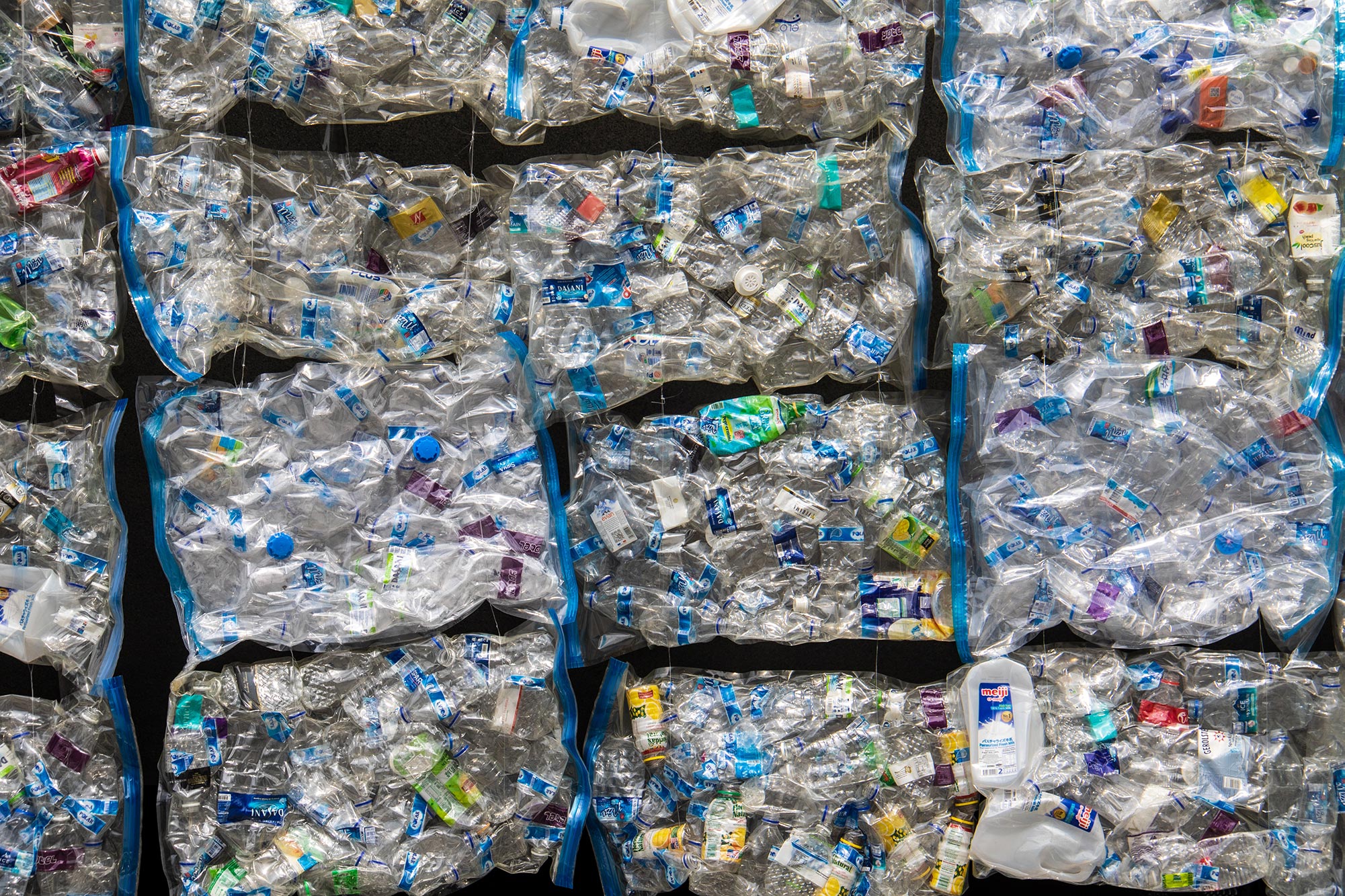
Can plastics recycling be profitable?

Plastics recycling in industrial areas
plastics, plastics recycling, circular economy, resource wisdom, business cooperation, port, waste, value chain, piloting, reuse
It has become apparent that more plastics need to be recycled. The purpose of this concept is to launch plastic recycling activities in industrial areas and to create cooperation between companies to achieve climate goals. An experiment was carried out to illustrate the functionality of recycling, to obtain information about the volumes of plastics and to collect feedback from companies in Vuosaari Harbour.
- 6443 kg/year: the theoretical amount of plastic waste generated in Vuosaari Harbour.
- 80% of the collected plastics could be reused instead of being used to produce energy according to the pilot project.
- Emissions: carbon dioxide emissions are significantly lower in recycling-oriented solutions than in the current solution in which plastic waste is mainly burnt.
This solution is suitable for
- cities that want to encourage companies to do their bit for climate change;
- companies that want to start recycling their waste or improve their existing procedures;
- companies that are looking for new business opportunities in the recycling sector.
BASIC FACTS
- Location: Vuosaari Harbour, Helsinki
- Life cycle: active phase.
- Organisers: Satu Pasanen/VTT Technical Research Centre of Finland, Juha Hakala/VTT Technical Research Centre of Finland, Saara Pellikka/City of Helsinki.
- Time span: 3 months – 1 year.
- A ‘plastic pilot’, a joint experiment to collect plastic waste from companies, was carried out during the concept development phase. Packaging plastics and plastics from logistics operations were collected from companies in Vuosaari Harbour. The pilot project was carried out in cooperation with the City of Helsinki and the Port of Helsinki between 16 November and 31 December 2020.
- The recycling solutions were compared to the current ones from the perspective of the economy and carbon emissions.
- The concept encourages the reuse of plastics.
The first plastic recycling concept in Vuosaari Harbour
National and international targets, such as the plastics roadmap for Finland and the EU plastics strategy, accelerate the recycling of plastics. The concept was inspired by the enthusiasm of companies in Vuosaari Harbour for recycling – it started at the grassroots level. The purpose of the concept is primarily to start collecting plastics in the industrial area and, secondarily, to promote cooperation between competing companies to achieve the climate goals.
During the conceptualisation phase, a pilot project was carried out in collaboration with public-sector operators, companies and a research institute. Practical experiments such as this produce scientifically valid and pragmatic data, encourage companies to try new work methods and increase dialogue between cities and businesses.
Piloting provides facts for conceptualisation
A ‘plastic pilot’, a joint experiment to collect plastic waste from companies, was carried out during the concept development phase. Packaging plastics and plastics from logistics operations were collected from companies in Vuosaari Harbour. The pilot project was carried out in cooperation with the City of Helsinki and the Port of Helsinki between 16 November and 31 December 2020. Seven logistics companies took part. Plastic material was collected in a waste compactor equipped with a smart scale, which was on loan from Europress Group Oy for the duration of the test.
A total of 812 kg of various types of plastics was collected, mainly polyethylene (LDPE) and polypropylene (PP), which were taken to be reused. The plastic materials were sufficiently clean for the purposes of the collection experiment. Participants filled in a questionnaire afterwards that collected feedback and user experiences for concept development. Most participants found it easy to take part in the plastic pilot and joint collection efforts. Companies thought that collaboration was viable, especially with regard to waste management and other environmental services.
Comparative information with economic and environmental perspectives
The economic perspective was illustrated and assessed in the context of Vuosaari Harbour’s location and the pilot carried out there. Different solutions were created for this industrial area in terms of waste management and recycling, and in addition to the current situation, two alternative solutions are presented, A and B. In the current situation (REF), plastic waste is not recycled but is sent to be burnt at a waste-to-energy facility. Solution A does not involve sorting at the place of origin but all plastic waste is put together and taken to a recycling company. In solution B, plastic waste is sorted at the place of origin, i.e. only LDPE and PP plastic waste is collected.
The results show that the current situation (REF) is the cheapest if only 6.5 tonnes of plastic waste is generated per year, but this option becomes the most expensive as the amount of waste increases. Solutions A and B, which encourage people to recycle, are more economical when the volume is 1.5–2 times higher. Carbon emissions in solutions A and B are significantly lower than in the reference situation. An increase in the amount of plastic waste in solutions A and B generates lower level of emissions than the reference situation.
Putting the concept into practice
The concept is based on solution B, in which the LDPE and PP waste collected from the companies in the port is sent to mechanical recycling. There is also already an industrial recycling solution. As it develops, the concept aims to apply solution A, in which a wider variety of plastic waste can be collected and sent either to be reused as recycled material or as material for the petrochemical industry. Introducing solution A will require cooperation with a suitable recycling or sorting company located near the industrial area. In both solutions, the flow of plastic waste from nearby areas is added to the flow from the port as this increases the impact on the local area. The concept is based on the idea that plastic waste generated in the area is returned there in products used in the area (e.g. packaging films or bags) or is used in products such as fuels used by machines in the area.
All respondents said that a joint collection of plastics should remain a permanent part of the port’s operations. The joint collection model is easy to adopt and scale to suit different types of industrial areas. Expanded to cover the whole country, this type of activity in industrial areas would have the potential for substantial emissions reductions.

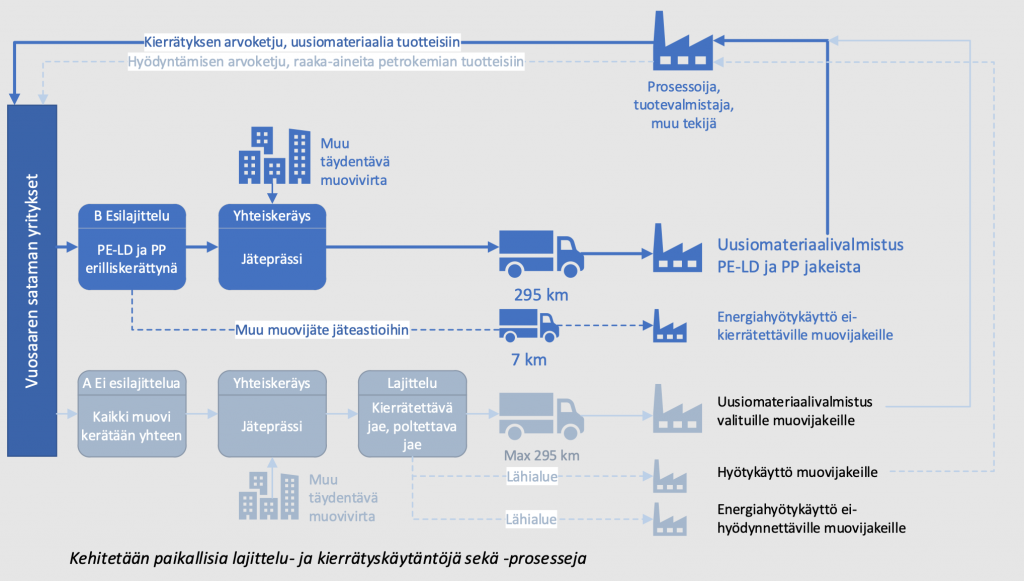
TAKE-HOME MESSAGES
- Companies are enthusiastic about plastic recycling and they want their operations to be more sustainable.
- Piloting provides scientifically valid, practical information on the amount of waste generated in an area and companies’ recycling-related requirements and practices.
- Competing companies can collaborate and gain environmental and economic benefits.
- Cities will be able to persuade companies to adapt the climate goals by launching new pilot projects that focus on emissions reductions and resource wisdom and that benefit companies in the short or long term.
“As the global use of plastics increases, we need recycling to curb this trend. Solutions are created at the local, national and international level. Recycling captures plastic waste for reuse or recovery and offers environmental and economic benefits to businesses.”
– Satu Pasanen, Research Scientist, Circular Economy Developer, VTT Technical Research Centre of Finland
Download
Links
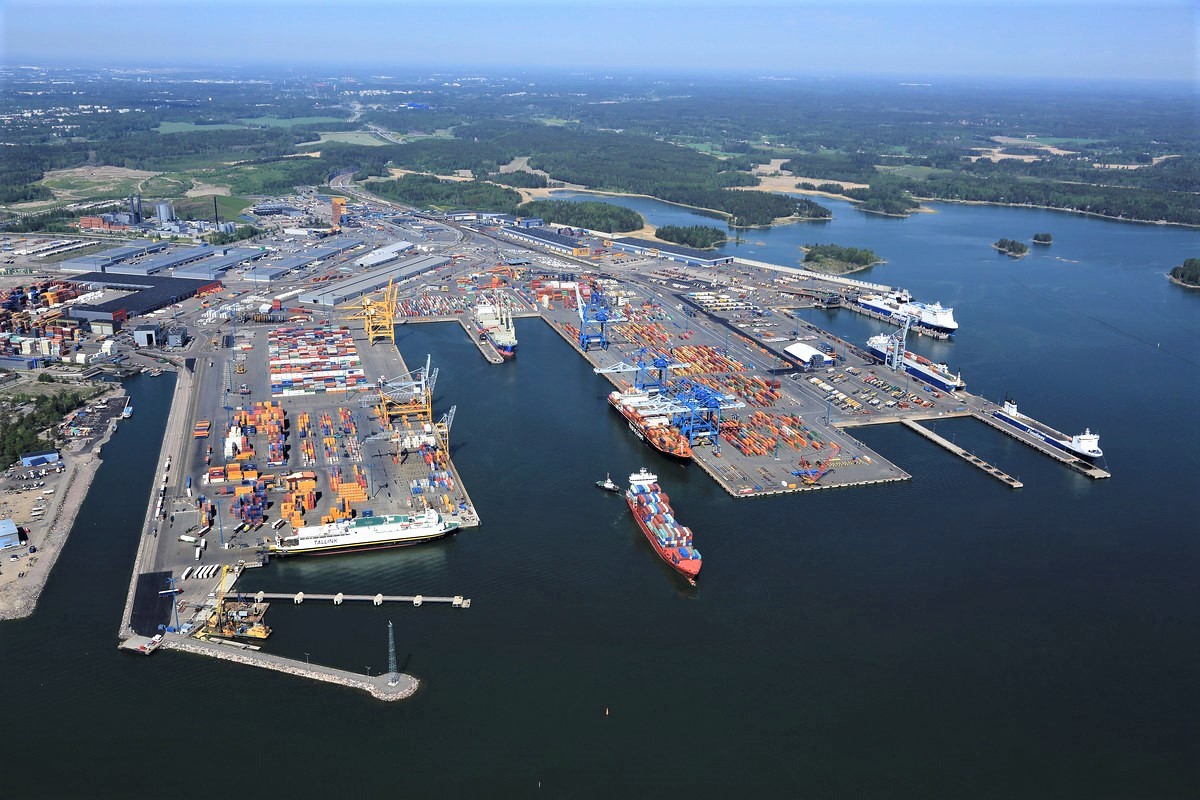
How can machinery contribute to creating a carbon neutral port?
Low-carbon solutions for machinery in cargo port operations at Vuosaari Harbour
machine emissions, cargo port, freight transport, alternative sources of power, road map
The model explored ways to reduce carbon emissions from machines used in cargo port operations, using Vuosaari Harbour in Helsinki as an example. The key themes were low-carbon power sources, the contribution of different partners and the roadmap for reducing emissions from machine operations.
- More than 75% of the CO2 emissions from machines in Vuosaari Harbour are generated by straddle carriers and terminal tractors, so measures to reduce emissions should focus on these types of machines.
- Electrification would appear to be both an emission- and cost-effective solution for energy-intensive machines with high utilisation rates, such as straddle carriers.
- A pilot programme for new technologies has been proposed for 2021–2027, which would pave the way for the launch of low-carbon solutions to the market.
This solution is right for you if
- you are interested in ways and means of reducing carbon emissions from machines, especially in the context of cargo ports;
- you are working on reducing carbon emissions from port machines or port operations;
- you want to promote low-carbon machines in a company or in an industrial area.
BASIC FACTS
- Location: Vuosaari Harbour, Eastern Helsinki
- Time span: 2019–2021
- Organisers: Saara Pellikka from the City of Helsinki’s environmental services was responsible for implementing the concept in close cooperation with VTT Technical Research Centre of Finland, the Port of Helsinki and the following key partners: Finnsteve Oy Ab, Steveco Oy, Multi-Link Terminals Ltd Oy, Oy M. Rauanheimo Ab / Oy Adolf Lahti Yxpila Ab, Container-Depot Ltd Oy / Arctic Container Oy, SA-TU Logistics Oy, Nurminen Logistics Oyj, Alfons Håkans, Konecranes Finland, Kalmar / Cargotec, Royal Terberg Group and Port of Gothenburg (reference site).
Companies interviewed to canvass their commitment and areas for development
The City of Helsinki’s environmental services interviewed companies in Vuosaari Harbour in late 2019 and early 2020 to explore areas for improvement in terms of reducing emissions from machines. A key finding was that companies want to reduce emissions from machinery, but new solutions need to be cost-effective and easy to operate in the port environment. Biofuels and electrification, in particular, were brought up as potential means to achieve this. A summary was prepared on the basis of the interviews, and the following measures were proposed:
- Increasing companies’ understanding of new power sources and emissions reduction solutions that are suitable for port operations (including emission- and cost-efficiency).
- Exploring the types of control measures that the Port of Helsinki could use to encourage companies that operate in the area to use new power systems, and assessing the infrastructure capacity and the necessary changes if a new source of power were to be adopted on a large scale.
The report describes how the emission targets for machines can be achieved
VTT examined measures that would reduce CO2 emissions from the port’s machines by 60% by 2035 (in Finnish: Selvitys ja tiekartta Vuosaaren sataman työkoneliikenteen päästövähennyksille). The study suggests that measures should focus on straddle carriers and terminal tractors, as these types of machine were estimated to generate more than three-quarters of emissions from machines in the area.
It would seem impossible to meet the emission targets without some degree of electrification of the straddle carriers or use of renewable fuel. Electrification proved to be a cost-effective solution for energy-intensive machines with a high utilisation rate, such as straddle carriers. The power grid in the port area would appear to be sufficient for operating battery-operated straddle carriers and terminal tractors. The simultaneous operation of the port’s 33 straddle carriers would require approximately nine 600 kW fast charging points, which would mean an investment of approximately 3–5 million euros.
Incentives for the Port of Helsinki would include compensation for the additional cost of renewable fuel, a discount based on the utilisation rate of electrical machinery and leasing electrical machines and charging infrastructure to operators for testing purposes. The roadmap for emissions reductions in 2021–2035 was presented as a key output.
Piloting of new technologies is at the heart of the carbon roadmap
The carbon roadmap for machine logistics paves a way for the use of market-based low-carbon solutions in the Vuosaari Harbour area. It was proposed that a pilot project should be launched to make it easier for port operators to switch to fully electric machinery and start using renewable fuel so that they could learn how to use new technologies. Operators would test some electric machines, such as straddle carriers and terminal tractors, and the use of renewable fuel in machines of different ages would also be demonstrated in the project. The path to low-carbon machines would have three phases:
- Pre-planning of the piloting project, 2021–2022
- Piloting new technologies, 2022–2027
- Gradual transition to market-based operations, 2027–2035
The roadmap was drawn up by VTT as part of the study and roadmap project on emissions reductions in Vuosaari Harbour.
Machinery emission calculation using a calculation model and training video
The Excel-based calculation model can be used to calculate the carbon emissions and total operating costs of machines and to compare the cost-effectiveness of emissions reduction with different power source options (EUR/tonnes of CO2). The model takes into account both direct emissions (TTW, tank-to-wheel) and lifecycle emissions (WTW, well-to-wheel) from machines. The model is particularly suitable for stevedoring companies that own port machinery, but it can also be applied to other types of machinery, provided that input data is added. The model has two parts:
- The generic model that calculates emissions and costs for an individual year.
- The scenario model that includes the generic model and also calculates emissions for 2019–2035.
The calculation model and an introductory video have been made by VTT as part of the study and roadmap project on emissions reductions in Vuosaari Harbour.
Training video on the use of the model for calculating emissions and costs generated by machines (in Finnish):
TAKE-HOME MESSAGES
- The port environment has special requirements and offers opportunities for measures to reduce emissions from machines.
- The most suitable emissions reduction solutions are found by optimising them according to how much a machine is used and how practical as well as emission- and cost-efficient they are.
- Piloting would make it possible to find the most efficient technologies, operating methods and service models for the port environment, and it would pave the way for the launch of new low-carbon solutions to the market.
“The goal of the Port of Helsinki is to reduce CO2 emissions in the entire port area by approximately 30,000 tonnes by 2035. All operators in the port area need to work together to reduce emissions. The roadmap provided by the HNRY project is a great tool for exploring potential ways to reduce emissions generated by machines in the port area.”
– Andreas Slotte, Head of Sustainable Development, Port of Helsinki Ltd.
Download
Links
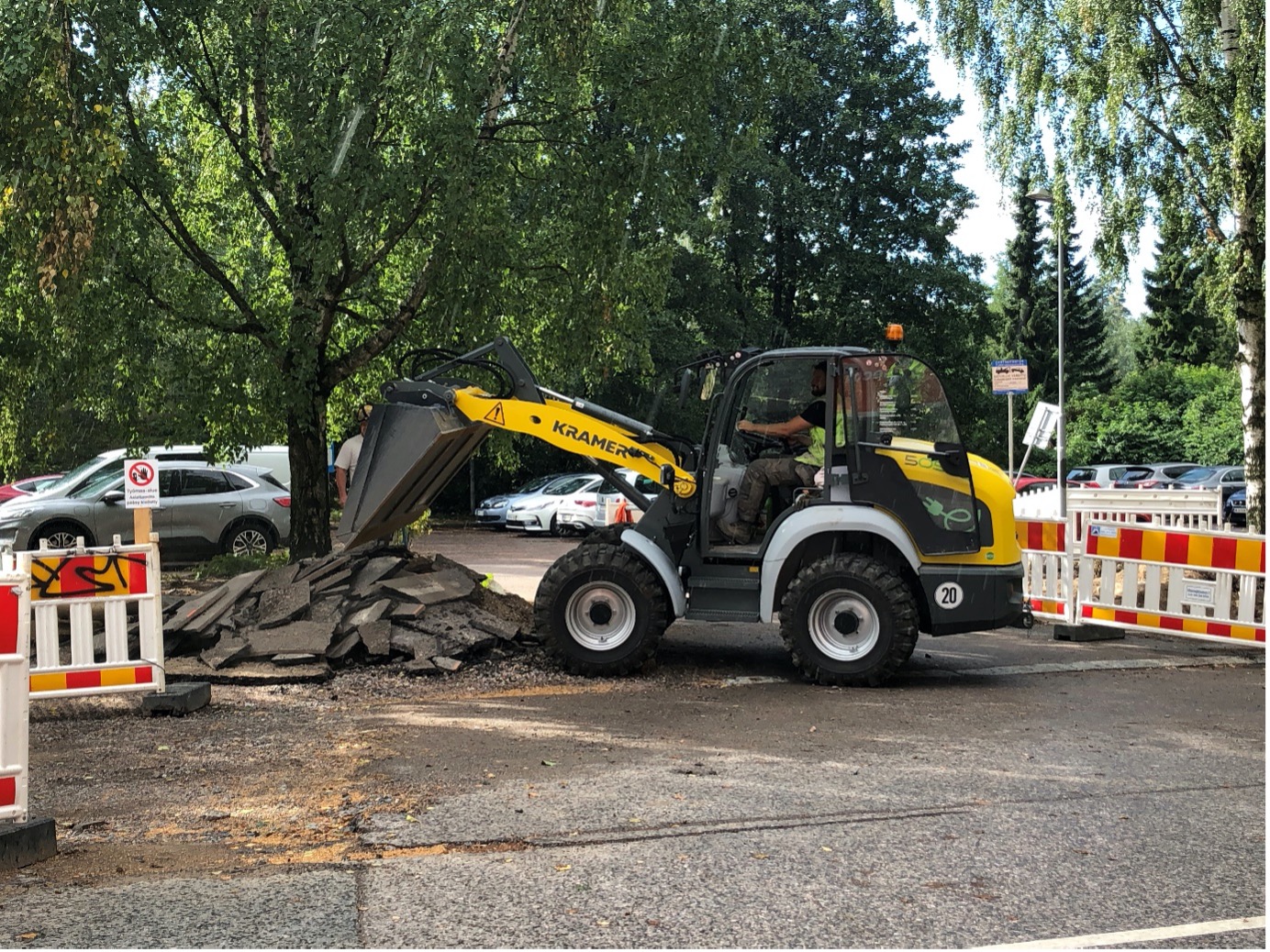
How can we reduce emissions from infrastructure construction sites?

Pilot for a zero-emission infrastructure worksite in Helsinki: turning Kulosaaren puistotie into a cycling street
- low-emission
- construction site
- heavy machinery
- heavy goods vehicle
- fossil-free
- renewable HVO diesel
- alternative motive power solutions
- electric heavy machinery and equipment
- market dialogue
- emission-free construction sites – green deal agreement for sustainable procurement
Construction sites not only cause significant amounts of greenhouse gas emissions but also harmful local emissions. The boulevard of Kulosaaren puistotie was one of the pilot sites in the emission-free infrastructure construction sites project of the City of Helsinki. The objective of these pilot sites was to reduce emissions from construction sites. The machinery and equipment used on the site included four fully electric heavy machinery units, while the rest of the machinery was powered by renewable HVO diesel.
- Electric heavy machinery and equipment. Companies participating in the tender were urged to use electric heavy machinery and equipment. Three fully electric loaders and one mini excavator were used on the site. While in operation, they do not generate emissions or make a lot of noise.
- Positive experiences. Since the summer of 2020, all tendered infrastructure construction sites of the City of Helsinki have been based on low-emission solutions. So far, it seems that having low-emission criteria in the requirements has had very little impact on companies’ motivation to participate in tenders or their pricing.
- 58% less emissions. Thanks to the solutions, emissions from the pilot project were only about 42% of those from a traditional construction site, and the solutions prevented the generation of over 106 tonnes of CO2 equivalent.
This solution is right for you if
- you buy infrastructure construction services;
- you represent an infrastructure company/contractor; or
- you want to reduce emissions from your organisation’s construction sites.
BASIC FACTS
- Location: Helsinki, Kulosaari – the boulevard of Kulosaaren puistotie was converted into a shared in-roadway bikeway, becoming part of the Itäbaana express bike route, one of the main bike routes to the city centre
- Time frame: 12/2019 (dialogue with the market) – 4/2021 (project completion)
- Project parties: City of Helsinki, Urban Environment Division, Housing and Environment; contractor: VM Suomalainen Oy
A carbon-neutral Helsinki can only be achieved by also reducing emissions from construction sites
Emissions from heavy machinery and equipment used on construction sites as well as heavy goods vehicles account for a significant proportion of carbon dioxide emissions generated in cities and municipalities. Moreover, they also generate harmful local emissions, particles and noise that impair air quality in the area. In densely built urban environments, the harmful effects of construction sites are even greater.
Despite this backdrop, current legislation does not give decision-makers enough power to address construction sites’ harmful effects on climate and health, and greenhouse gas emissions caused by heavy machinery and equipment are not regulated. The City of Helsinki has recognised this issue, and one of the goals of the Carbon-neutral Helsinki 2035 Action Plan is to reduce greenhouse gas emissions from construction sites with initiatives such as piloting the use of emission-free heavy machinery and equipment in the City’s infrastructure projects.
The City of Helsinki has also actively participated in international campaigns and projects to promote emission-free construction sites. European cities have exchanged information and experiences for example in the Zero-Emission Construction Sites working group of the Big Buyers Initiative funded by the European Commission and in the E-ZEMCONS project funded by EIT Climate-KIC.
Engaging in market dialogue to ensure a successful tender process
The City of Helsinki launched the market dialogue on zero-emission infrastructure construction sites and the preparation of the procurement criteria in December 2019. A joint market dialogue event with the stakeholders was followed by one-to-one discussions with several infrastructure contractors. Market representatives provided valuable information about aspects such as the current condition of the fleet and the availability of electric heavy machinery and equipment, and they also confirmed the use of the proposed minimum requirements.
Spring 2020 saw the finalisation of the criteria to be used in the tender and, more widely, in the zero-emission construction site pilot project and on low-emission infrastructure construction sites. The invitation to tender for the pilot project of the boulevard of Kulosaaren puistotie was published in May 2020.
Contract documentation was being drawn up at the same time with the preparation of the green feal agreement for emission-free construction Sites. The requirements laid down in the invitations to tender for the City of Helsinki’s infrastructure contracts are more ambitious than the current requirements of the green deal agreement, which defines a joint minimum level, while cities have the option to impose stricter criteria at a faster pace.
Trialling zero-emission solutions on the construction site of the boulevard of Kulosaaren puistotie
Launched in July 2020, the conversion of the boulevard of Kulosaaren puistotie into a shared cycle lane is a pilot project in which greenhouse gas emissions and harmful local emissions generated on the site were reduced using concrete methods. The equipment fleet used on the site consisted of four fully electric heavy machinery units (three 4.2-tonne loaders and one mini excavator), while the rest of the equipment, apart from a few exceptions, was powered by renewable HVO diesel.
The other fossil-free fuels allowed to be used on the site were biogas, hydrogen, ethanol and renewable fuel oil. The heavy machinery was at least Stage IV compliant, while heavy goods vehicles were compliant with the Euro VI emission standards. Light equipment (equipment with a maximum power of 4 kW) was required to be primarily powered by electricity. The electricity used on the site was required to be produced from renewable energy sources, and heating on the site had to be based on district heating, fossil-free biofuels or green electricity. In addition, the contractor was required to have obtained environmental certification. The use of electric heavy machinery and equipment was encouraged by awarding the most economically advantageous quality scores (in which the price accounts for 70% and quality for 30%) for a maximum of five electric heavy machinery units.
The list of equipment used in the project was updated whenever new machinery and equipment was brought to the site. The consumption of fuel and electricity on the site was reported monthly in site meetings. The customer and contractor developed monitoring and reporting together.
Positive experiences pave the way for future projects
When the majority of the Kulosaari project had been completed, the HNRY project team produced a rough calculation of the emissions generated during the project compared to a project based on traditional solutions. The calculation was based on fuel and electricity consumption and equipment uptime data obtained from the contractor. The calculation showed that, thanks to the solutions used on the site, the emissions from the site were about 42% of the emissions of a similar project carried out using traditional solutions. The amount of emissions that were prevented was over 106 tonnes of CO2 equivalent, or the annual carbon footprint of roughly ten people living in Finland.
Principles of zero- and low-emission construction sites have already been utilised on several infrastructure construction sites of the City of Helsinki. Encouraged by the success of the pilot projects, all tendered infrastructure construction sites of the City of Helsinki have been based on low-emission solutions since the summer of 2020. The experiences have primarily been positive, and it seems that having low-emission criteria in the requirements has had very little impact on companies’ motivation to participate in tenders or their pricing. In 2021, the City of Helsinki aims to apply the principles of zero-emission constructions sites compliant with the Green Deal agreement to all of its tendered infrastructure, construction and maintenance projects.
TAKE-HOME MESSAGES
- Engaging stakeholder groups and active market dialogue are focal points for formulating functional and suitably ambitious purchasing criteria.
- The ambition of the City of Helsinki to cut down the emission levels is shared within the infrastructure companies and the goals are to be realized through the procument requirements.
- Different types of collaboration platforms are recommendable for sharing the experiences and lessons learnt.
- Having an open mind is worthwhile – you learn by doing and the pace of development might surprise.
“Contractors’ ability to meet low- and zero-emission requirements seems to be improving quickly, so reducing emissions from construction sites in line with the green deal agreement seems like a realistic goal.”
– Jarkko Karttunen, Head of the Urban Environment Division, City of Helsinki
“The Kulosaari project got me thinking about how, by making small changes, you can get the same output but with less emissions. We are already using renewable electricity throughout the company. There are plenty of great and competitively powered and priced low-emission products and services available in Finland, but due to the prejudice against these solutions, there is still lots that needs to be done, in particular when it comes to people’s ideas about quality.”
– Tim Karike, Communications Manager, VM Suomalainen Oy
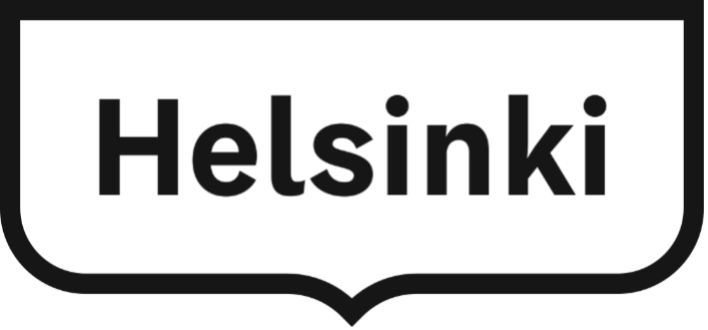
Download
Links
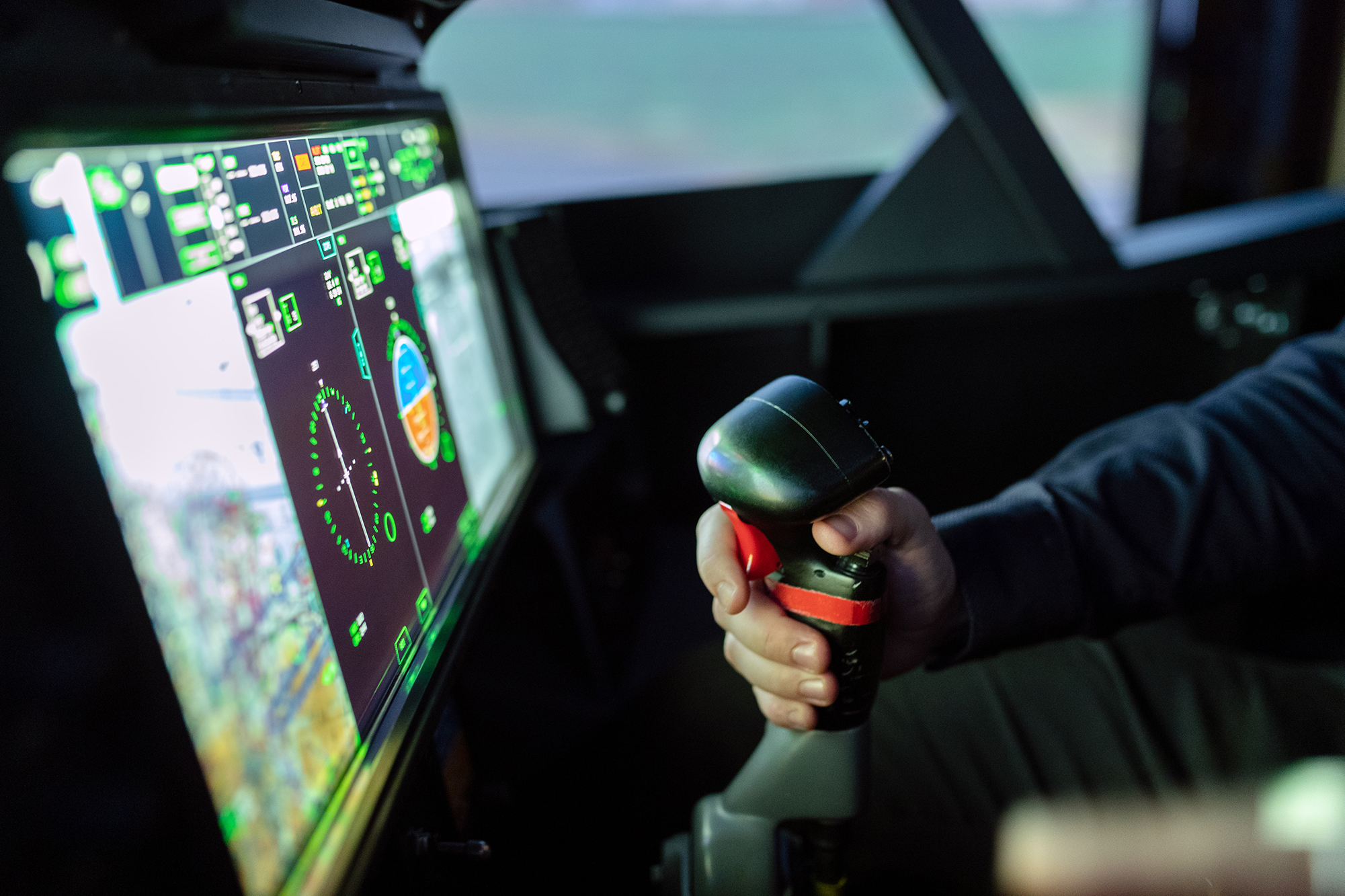
How can a company reduce its environmental footprint through simulator training?

Simulator training to encourage resource-wise use of machinery
resource wisdom, education, learning, virtual environment, simulation, operating methods, competence
The size of a company’s environmental footprint depends on its operating models and work methods. This concept examines the various ways in which simulation environments enable new types of training for using machinery, developing techniques and ways to minimise environmental impacts.
- Minimise: learn resource-wise techniques and minimise the energy consumption of your machines.
- Certify: train new staff and verify your staff’s skills.
- Take action: plan to ensure resource-wise operations.
This solution is right for you if
- your company uses machinery or produces logistics solutions;
- you are interested in simulation environments and their use for learning purposes;
- your job involves planning training activities or you are interested in improving work methods.
BASIC FACTS
- Simulation training is suitable for all companies that use machinery and develop logistics solutions
- Simulation training in a virtual environment creates resource-wise and environmentally sustainable solutions to meet companies’ training and development requirements
- Simulation-based training solutions are already available and are expected to evolve in the coming years
- The concept is implemented by:
- University of Turku, Finland Futures Research Centre (FFRC), Essi Silvonen
- The HNRY project’s transport and logistics solutions forums
- The practical applications have been evaluated in cooperation with ADE Oy
New resource-wise ways to boost emissions reductions
It is essential to find work methods that can be changed to reduce emissions and act in a more resource-wise manner. Reductions made by changing the activities of an individual employee may be small, but the cascade effects resulting from a systematic change become significant in the context of industrial areas.
The principles of carbon neutrality and resource wisdom go hand in hand with health and safety. The principles can be incorporated into professional qualifications and, consequently, they become part of the required techniques. Employees also learn to see and develop their activities in terms of environmental criteria.
The purpose of this concept is to reduce the energy used by machinery; this is achieved by minimising energy loss in operations, streamlining practices, shortening transitions as well as optimising loads and the use of storage capacity. These operational efficiency goals are common and shared by companies. The concept examines how training activities using simulations in virtual environments can help to achieve these goals.
Resource-wise learning will take place in virtual environments
Virtual environments have evolved over the years and are expected to continue to do so. They are used more commonly, and the number of applications designed for educational purposes has also increased. Most training courses are held at educational institutions, but some are also organised in industrial areas. Competence assessment and training play an important role when it comes to recruiting and placing new staff as well as in maintaining and developing current staff’s skills.
Training in a simulation environment has a much lighter impact on the environment than training in a real environment. It allows for the assessment of skills and practising and refining of new skills as required without causing a significant environmental burden.
Methods of using machinery can be improved in virtual simulation training
There are already virtual training solutions that focus on topics such as transporting machines, their safe use and deployment. These solutions are also connected to an industrial area’s carbon neutrality and resource wisdom, which is why it is interesting to see how simulation training can support emissions reduction and resource-wise techniques. The focus is primarily on machines and how they are used in industrial areas, but similar principles also apply to other activities in these areas. Resource-wise work methods can be developed through measures such as training courses on the environmental footprint, skills assessments, training and certification of new employees’ skills, further training and maintaining professional skills, minimising machines’ fuel/energy consumption and planning and optimising work and material flows in the industrial area.
How is simulation training organised in practical terms?
We use the virtual training centre developed by ADE Oy as an example. It can be located either on a company’s premises, in an industrial area or on the premises of a local vocational training centre or other service provider. The virtual training centre is a modular package that consists of the hardware, software, virtual headset and special aids required in the particular course. It is in constant contact with a control room, which provides technical support as well as assessment and approval of skills certification.
The virtual environment offers a variety of exercises from among which attendees choose the ones they need. There is also a test environment in which performances can be evaluated. The virtual training centre is a service with a monthly fee, which varies from a few hundred euros upwards, depending on the number of training modules. Virtual environments and simulation-based training courses are already available on various cranes, vehicles, fire safety, logistics operational safety, operations on construction sites and customer service situations.
See a more detailed presentation of the virtual training centre:
TAKE-HOME MESSAGES
- Virtual environments provide easy and cost-effective ways to organise training. The number of available courses is increasing and the scope of their content is expanding.
- The virtual training centre provides a resource-wise way to organise inductions for new staff, offer further training for current staff and to maintain professional skills.
- Virtual solutions and environments are not only suitable for training individuals but they also make it possible to provide larger virtual learning packages, in which a model of an industrial area or parts of it can be recreated in a virtual environment. This can be used to plan new work methods and assess the best way to implement changes and how they affect the operations as a whole.
- Virtual environments can be used to implement and simulate the progress of a construction site and the environmental footprint during construction, and they can also be used as tools for planning construction projects so that they are as resource-wise as possible.
“Training in virtual environments is a means for effectively practising sustainable work methods, and their future potential is limitless. We already have more than 40 simulators, which can be deployed quickly”
– Pasi Porramo, ADE Oy, 22.3.2021

How can climate action be measured in industrial areas?

Measuring carbon neutrality and resource wisdom
emission-free construction site, monitoring system, Technical Research Centre of Finland (VTT), life cycle assessment, measurement, emission calculation, resource wisdom, climate change mitigation
In order to effectively monitor the carbon neutrality and resource wisdom measures of industrial areas, emission calculations and monitoring tools must be continuously developed and applied. Emission reductions achieved in industrial areas are significant in view of the climate targets of their adjacent cities as the targets cannot be met without a contribution from businesses.
• Two construction sites: low-emission construction machinery were piloted in Espoo and Helsinki.
• Cooperation: the development of a monitoring system for construction site emissions started as a collaboration between the Technical Research Centre of Finland and the contracting entities of cities that are signatories to the sustainable procurement Green Deal agreement for emission-free construction sites.
• Plastic: the impact of plastic recycling on greenhouse gas emissions from waste treatment was assessed in a trial carried out in the Vuosaari Harbour area.
This solution is right for you if
- you are looking for general information on measurement and calculation methods related to carbon neutrality and resource wisdom targets for industrial areas and construction sites.
BASIC FACTS
- Location: emission-free construction site pilot in Espoo and Helsinki, Vuosaari Harbour, Blue Industry Park in Turku, energy efficiency project in Vantaa
- Implemented by: participants in the HNRY project (Carbon-neutral and resource-wise industrial areas project)
Emission reductions in industrial areas are important for the climate targets of the participating cities
The cities have set ambitious climate targets, and they aim to achieve carbon neutrality by 2035. When a city aims for carbon neutrality, it means that emissions produced within that area are reduced to a set level (e.g. 80% of the level of 1990) and the remaining emissions are compensated.
With regard to resource wisdom, cities aim for long-term targets that are based on EU targets (by 2040). Becoming resource-wise requires close interaction and development work, including in the management of materials and logistics, between the different project participants. For example, possibilities for resource-wise and energy-efficient use of construction machinery were reviewed at Vuosaari Harbour. There is also massive potential in materials recovery and intensifying circular economy as the plastic pilot project showed.
Basis and scope of emission calculations
The state and municipalities base their emission calculations on production or area. They include all greenhouse gas emissions produced within the set area (Scope 1) and emissions from the production of energy purchased from an outside source (Scope 2). When measuring the carbon neutrality of an individual business, the calculation can focus on direct GHG emissions (Scope 1), such as the use of fuels in energy production and in vehicles, and on indirect GHG emissions (Scope 2), such as emissions from the production of purchased electricity and district heating. The rest of the emissions are compensated (Scope 4).
For industrial areas, it is best to base the calculation on consumption so that emissions from the production, transport and disposal of products and services produced and consumed within the industrial area during a set period of time (Scope 3) are taken into consideration. An example of a consumption-based calculation can be found in the concept of emission-free construction sites for the Lukutori construction site.
Emission-free construction site – calculation scope and tools
Constructions sites usually have clear boundaries within which direct emissions are produced. Maintenance sites are not as clearly defined. Materials, fuels and purchased electricity mainly come from outside these boundaries. The scope of the emission calculation for a construction site depends on which processes are identified as most significant in terms of emissions.
In the Lukutori pilot project in Espoo, the majority of emissions were identified as being indirect emissions. The consumption-based calculation used also factored in emissions from the use and production of the fuel in the machinery, the production of batteries and electricity used for electricity-powered machinery, the production of electricity used for on-site power generation and the production and transport of materials used on site.
The emission calculation for the Kulosaari pilot construction site in Helsinki included emissions from the production of fuels (including biofuel) used in construction machinery as well as emissions from the production of electricity used by machinery and the construction site.
The lack of an established monitoring system has made it difficult to monitor the data needed for emission calculations. The parties to the Green Deal agreement for emission-free construction sites are in the process of developing a monitoring tool to be introduced by the end of 2022. The introduction of the monitoring tool and new practices will require contractors and machinery operators to be trained in order to ensure the quality of the data collected.
Data and tools for measuring and monitoring the climate action of industrial areas
An extensive overview on the factors affecting the resource wisdom and carbon neutrality of an industrial area has been drawn up and included in the Turku Blue Industry Park Guide. The scale does matter as energy-efficiency investments and the energy production of an entire industrial area or a cluster of businesses can bring significant emission reductions. An area can even become climate positive.
A pilot project that trained individual companies using company-specific customised content also produced training material for public use. Company training can be used to raise awareness of emission sources, assist with calculations and the implementation of climate measures.
In Espoo and Helsinki, the emissions of an emission-free construction site were compared to those from an “ordinary” construction site. The sustainable procurement Green Deal agreement for emission-free construction sites will help to harmonise practises and introduce monitoring tools for contracting entities.
Municipalities’ emission calculations tend to follow common guidelines but individual organisations and companies can apply such varying scopes and methods for calculating indirect emissions that it compromises the comparability of the results. There is a need for harmonisation, and this is why the experience gained during projects should be put into practice more widely.
TAKE-HOME MESSAGES
- The most sensible emission calculation method for an industrial area is consumption-based calculation.
- It is important to maintain the transparency of the calculation method and the reasons for the set scope.
- There is a need for methods to be harmonised, and therefore the experience in calculation methods and tools gained during projects should be actively put into practice more widely.
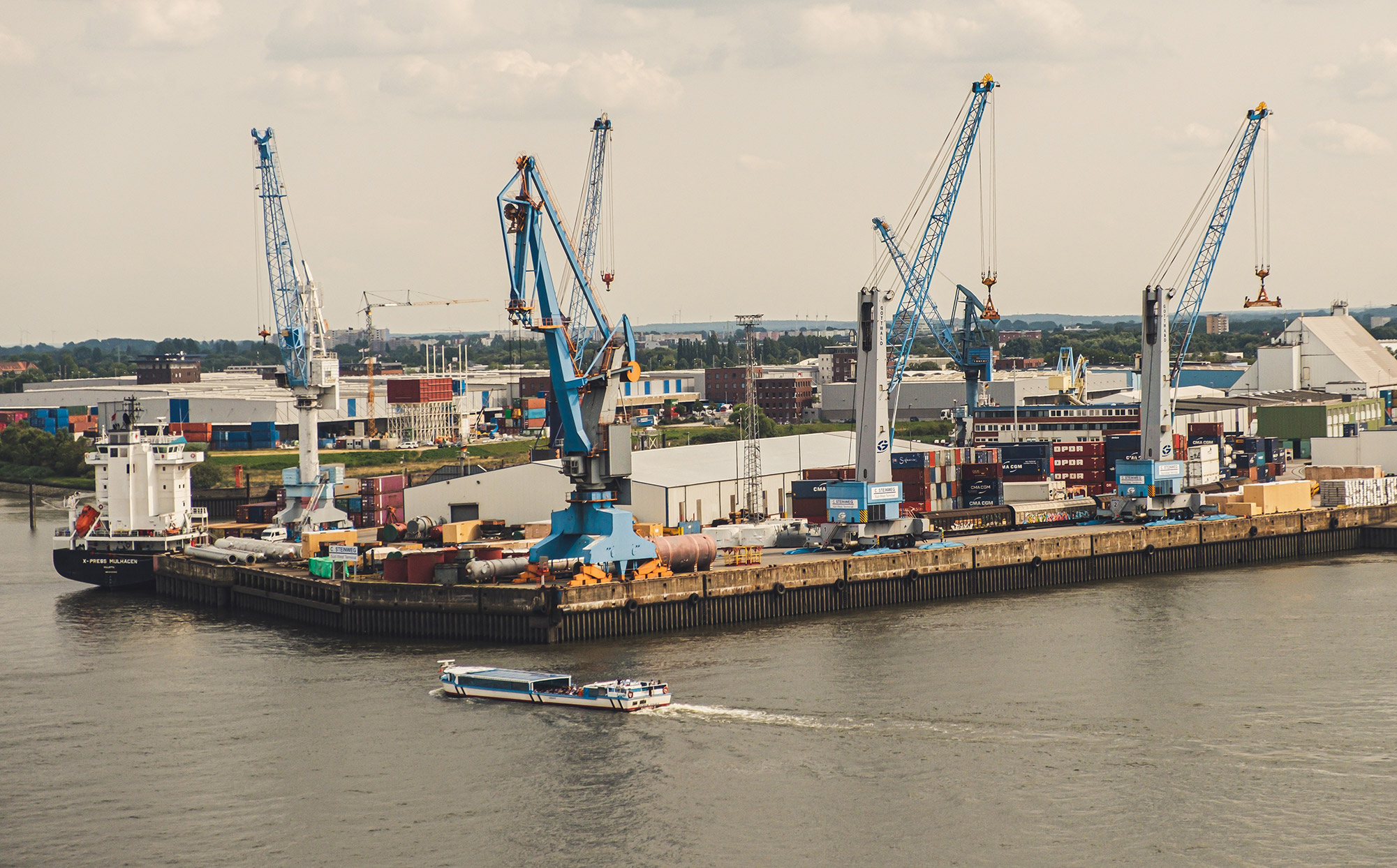
Is carbon neutrality and resource wisdom in a gated industrial area too narrow a perspective?
A resource-wise and carbon-neutral maritime industry network
reduce, reuse, recycle
The project developed an optimal operating model for flows of materials, resources and information in the Blue Industry Park and Turku Shipyard. The model can be used to achieve resource wisdom and carbon neutrality throughout the supply chain.
- 20–30% increase in value-adding operations.
- 3–7% reduction in material loss.
- 20% better production turnaround time through supply chain transparency and management.
- 5% lower material costs through centralised procurement.
This solution is right for you if
- you operate in the supply chain of Turku Shipyard;
- you operate in a manufacturing industry supply chain;
- you want to streamline your supply chain operations.
BASIC FACTS
- Location: Perno district, Turku. Next to Turku Shipyard.
- Industrial area life cycle: planning phase
- Organiser: Blue Industry Park Oy.
- Time span: 5–10 years from 2021 onwards.
- 600 companies in the supplier network.
- The maritime industry network in southwestern Finland employs 11,000 people.
- The turnover of the maritime industry network was EUR 3.3 billion in 2019.
The aim is to increase the efficiency of the maritime industry network
The concept identified how the operations of the maritime industry network could be streamlined, and an operating model was created for the planning and implementation of these improvements. The aim was to optimise the material, resource and information flows between the Blue Industry Park (BIP) and Turku Shipyard. The project assessed what kind of operating methods the companies in the maritime industry network should use in order to make the network’s operations as resource-wise and carbon-neutral as possible. Finally, it was determined what kind of control system would support resource-wise and carbon-neutral operations.
The logistics centre offers the best support to resource-wise and carbon-neutral operations
The concept determined which activities should be located in the BIP area in order to make the maritime industry network as efficient as possible and to support resource-wise activities. The key functionalities were production facilities and the logistics centre.
The need for production facilities varies: some operators require a small workshop while others need a larger production facility. The premises to be built must also be adaptable so that they can meet the changing demand. Pre-assembly and modularisation would also reduce the logistical burden in terms of traffic volumes and packaging materials. Traffic volumes are reduced when larger entities are transported and there are fewer deliveries of parts and components in the area.
Recycling reduces material waste
Recycling packaging waste and standardising transport packaging in the area would be very beneficial. If standardised methods were used for recyclable packaging materials, logistics operations would be clearer and the volume of packaging materials in the area would be reduced.
Building a centralised recycling centre in the BIP would serve companies in the area and help ensure that waste materials are recycled. The recycling centre would operate in the area between the BIP and the shipyard, which would be ideal for all parties.
With regard to the location of functionalities, traffic going into the shipyard must also be considered. The logistics centre should be located either beside or in the immediate vicinity of the production facilities in order to avoid any unnecessary traffic.
Information creates trust
Yhteistoiminnan ja resurssiviisauden edistämiseksi tarvitaan mitattua tietoa. Konseptiin liittyen määriteltiin viisi tärkeitä mittaria:
Measured data is required to promote collaboration and resource wisdom. Five important indicators were identified in relation to the concept:
- Security of supply of incoming materials
- DIFOT (Delivered In Full and On Time)
- Security of supply of site-specific material packages
- DIFOT (Delivered In Full and On Time)
- Progress of the site-specific plan
- Timing and accuracy of master production scheduling
- Timing and accuracy of detailed planning
- Implementation of the plan content
- Monitoring deviations
- Work package-specific monitoring
- Delivery line-specific monitoring
- Monitoring of transport volumes
- Monitoring of inbound logistics
- Monitoring of reverse logistics and material loss, surplus/waste
- 3R strategy (Reduce, Reuse, Recycle)
TAKE-HOME MESSAGES
- Material wisdom: centralised materials management can reduce material waste.
- Resource wisdom: minimising the amount of surplus material with more careful planning.
- Information wisdom: the information flow generated by the digital platform enables supply chain management and development.
“Stopping structural waste is the only way to save the planet.”
–Ari Viitanen, HPJ CarinaFour
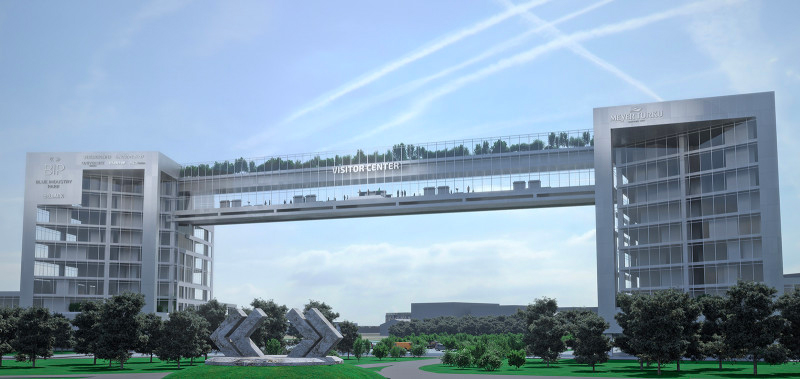
How to create a new resource-wise and carbon-neutral industrial area?

Blue Industry Park: the new resource-wise and carbon-neutral industrial area
hiilineutraali teollisuusalue
When building a carbon-neutral and resource-wise industrial area, it is necessary to take into account not only the planning but also the construction of the area and its day-to-day operations. The Blue Industry Park is an area that is gradually being built beside the Turku Shipyard, and it will be a functioning ecosystem of manufacturing industries and service operators. It takes the expertise and willing of all companies to achieve resource wisdom and carbon neutrality in the area.
- Blue Industry Park Oy. Established during the project to lead the construction of the area.
- Great transport links. Deep-water channel, E18, railway and distance to the airport 10 km.
- 55 hectares. Total area
This solution is right for you if
- you operate in the supply chain of Turku Shipyard;
- you operate in a manufacturing industry supply chain;
- you want to streamline your supply chain operations;
- you are planning a carbon-neutral and resource-wise industrial area;
- you are a contractor or developer in a carbon-neutral and resource-wise industrial area;
- you are a public operator, such as a planning officer, and you want to know how carbon neutrality and resource wisdom are implemented.
BASIC FACTS
- Location: Perno district, Turku. Next to Turku Shipyard.
- Industrial area life cycle: planning phase
- Organiser: Blue Industry Park Oy.
- Time span: 5–10 years from 2021 onwards.
- The maritime industry network in southwestern Finland employs 11,000 people.
- The value of Turku Shipyard’s order book in Q1/2021 is EUR 6.5 billion, cruise ship deliveries until 2026.
Towards a sustainable future
Blue Industry Park is a close-knit and diverse community of companies and research institutes, which are leading the change. There are no limits to its growth opportunities. The scalable spaces and shared resources provided in the area reduce the need for non-essential investments and enable business development in a sustainable and commercially viable manner. The community is responding to megatrends of production modularity and circular economy on a scope never seen before.
New technologies and cooperation are prerequisites for success
The concept guidelines do not provide ready-made solutions for the future, but they encourage all parties to share their expertise to achieve the shared goal. For the area to be successful, the best and most sustainable technologies and operating models available must be applied in every phase and solution.
The guidelines cover solutions for design and civil engineering, buildings and operations as well as transport.
Blue Industry Park’s ecosystem also includes service companies such as occupational health care, lunch restaurants and a visitor centre. Renewable energy sources are preferred, of course, and carbon neutrality is achieved by combining several solutions.
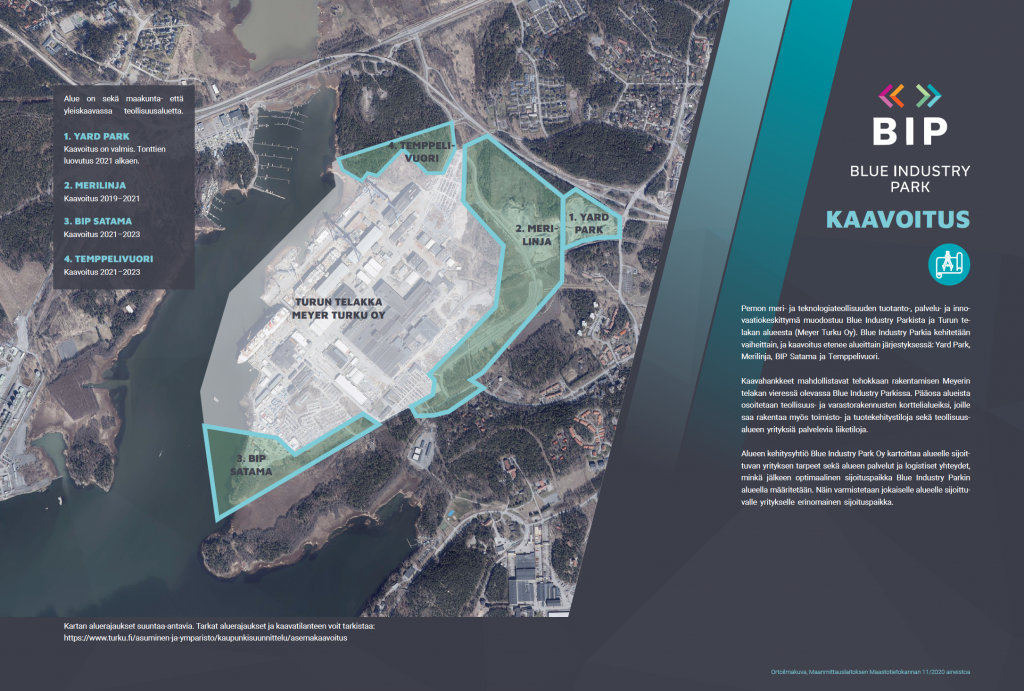
Research collaboration with universities
It is valuable for companies operating in the area that there are four institutes of higher education in Turku with research related to the maritime industry and maritime logistics. Blue Industry Park is a platform for productive cooperation in research projects and the supply of skilled labour both now and in the future.
The universities in Turku cover disciplines that are relevant to planning and building the area, such as energy technology, structural engineering, circular economy, economics and industrial management engineering.
TAKE-HOME MESSAGES
- The area’s location in relation to existing transport links and major customers is essential to minimise emissions from transport.
- When building the area, the use of land masses in the region and the area under construction must be optimised so that unnecessary transportation and costs can be avoided.
- Renewable energy production, transmission and storage solutions need to be considered at the planning phase.
- The flexibility and modularity of the facilities improve their occupancy rate and cost efficiency.
- Sharing machinery and equipment makes it easier to adopt new eco-friendly technologies and reduces the number of equipment needed in the area.
- There must be a leader with a clear role to create an area that runs on synergy and cooperation.
”Companies must assess and develop their practices: new ideas only come from doing things differently. We know that those who can realise their full growth potential, find the right partners and work in a carbon-neutral and resource-wise manner will be successful.”
– Tero Lahti, CEO, Blue Industry Park Oy.
Download
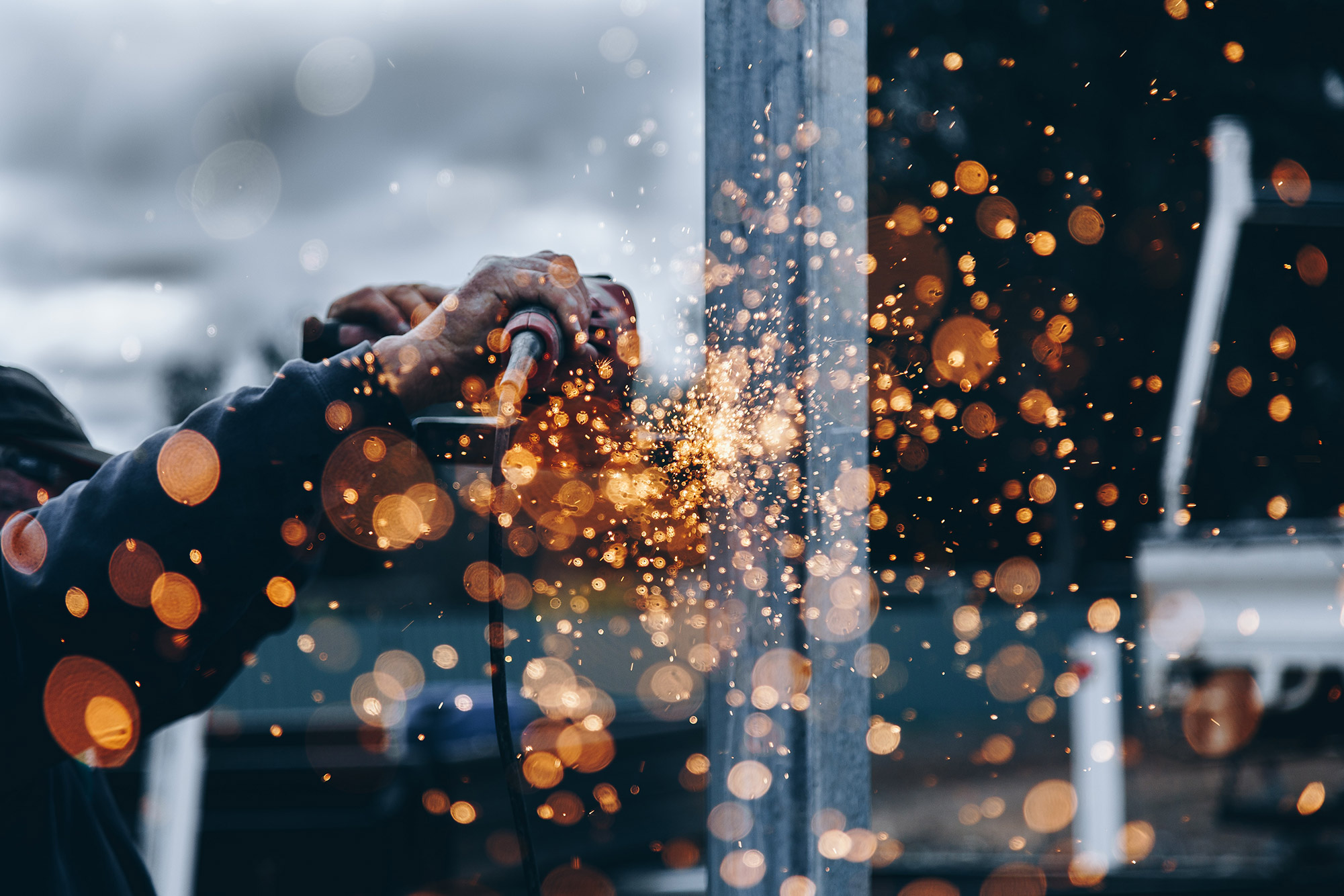
How can the city’s work sites become emission-free?

Emission-free work site: Turku
emission-free work sites, process, cities’ climate targets
Climate targets adopted by also cities require quick action to reduce emissions from the machinery and equipment used in construction and maintenance. Developing sustainable procurement strategies within the city is a multi-phase process requiring coordination, better understanding and cooperation within the industry and between partner cities.
This solution is right for you if
- your city is in the process of developing emission-free work sites and joining the Green Deal Agreement;
- you want to learn more about how emissions from heavy machinery are linked to cities’ climate targets and climate protection; or
- you are in charge of your organisation’s procurement, make purchases for projects in urban environments or coordinate projects related to sustainable procurement or work sites.
BASIC FACTS
- Location: Turku
- Organisers: Urban Environment Division and Central Administration of the City of Turku, Motiva, Valonia
- Time frame: 5/2019–5/2021
Reducing work site emissions is important for achieving climate targets
Heave machinery is used on building and infrastructure construction sites, and cities are planning to achieve significant reductions in the particulate matter and greenhouse gas emissions from these heavy-duty vehicles. According to the City of Turku’s 2018 climate report, heavy machinery and industries accounted for approximately 8% of the city’s annual greenhouse gas emissions. This rate has grown and continues to grow, proportionally, because the rates of the other largest emission sources, or energy and traffic, have started to go down.
The City of Turku has an ambitious goal of becoming climate neutral by 2029, which requires quick and systematic solutions. Working together with other cities and Motiva under the Emission-free Work Sites − the Green Deal for Sustainable Procurement Agreement has provided support and the framework for introducing the targets to the city’s different Divisions and for developing procurement criteria.
Following Oslo’s example and launching planning projects
In the HNRY project, emission-free work sites have been benchmarked in Oslo, a pioneer in using electric machinery on work sites. The site visit to Oslo provided practical information about the parameters and possibilities of using electric machinery on work sites in city centres. For example, providing electricity to the machinery is easier when the site is located near an electricity network with sufficient capacity.

Adopting new practices requires time and planning
Constructors are trying to quickly enter the era of energy efficiency and fossil-free energy. Reducing work site emissions requires established practices to be adjusted at the same time across different areas both within cities and in the operations of construction and machinery companies.
Electric heavy machinery and the criteria for emission-free work sites have already been piloted elsewhere in the campaign, but Turku has focused on working from the ground up as it plans to adopt the procurement criteria after the project has ended.
Turku case – process description to help other cities plan how to proceed
Turku’s process, from benchmarking and working with other HNRY partner cities and Motiva to the first discussions with the market stakeholders on the principles of emission-free work sites, provides an interesting example to other similar-sized cities with projects of the same type.
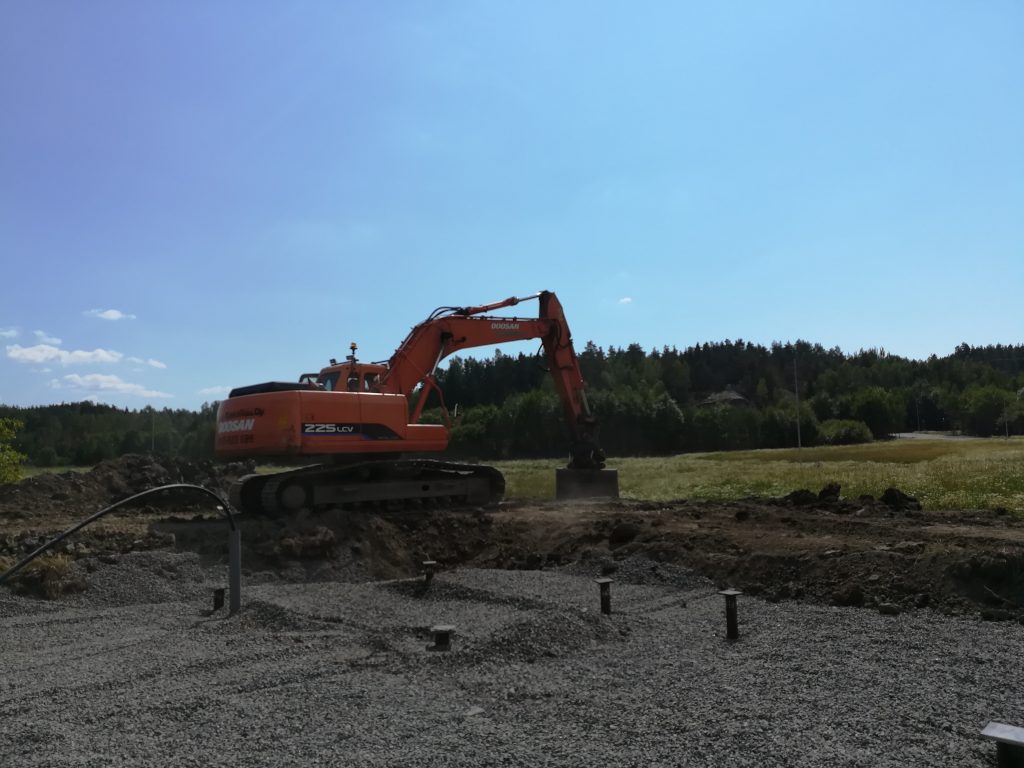
TAKE-HOME MESSAGES
- Cities and project structures are different; do not expect progress to be identical.
- Commitment alone is not enough – a lot must be done to achieve permanent practical changes.
- Working together is power, and examples help others to avoid pitfalls.
- Changes must be fair and equal to all parties involved.
- Other cities, both in Finland and abroad, are interested in examples from pilot work sites.
“Reducing emissions from work sites requires established practices to be adjusted at the same time across different areas, which is why it’s so important to have so many stakeholders involved from the start.”
– Minna Arve, Mayor of Turku, on 9 September 2020 at the signing ceremony of the Emission-free Work Sites − the Green Deal for Sustainable Procurement Agreement
Download
Links
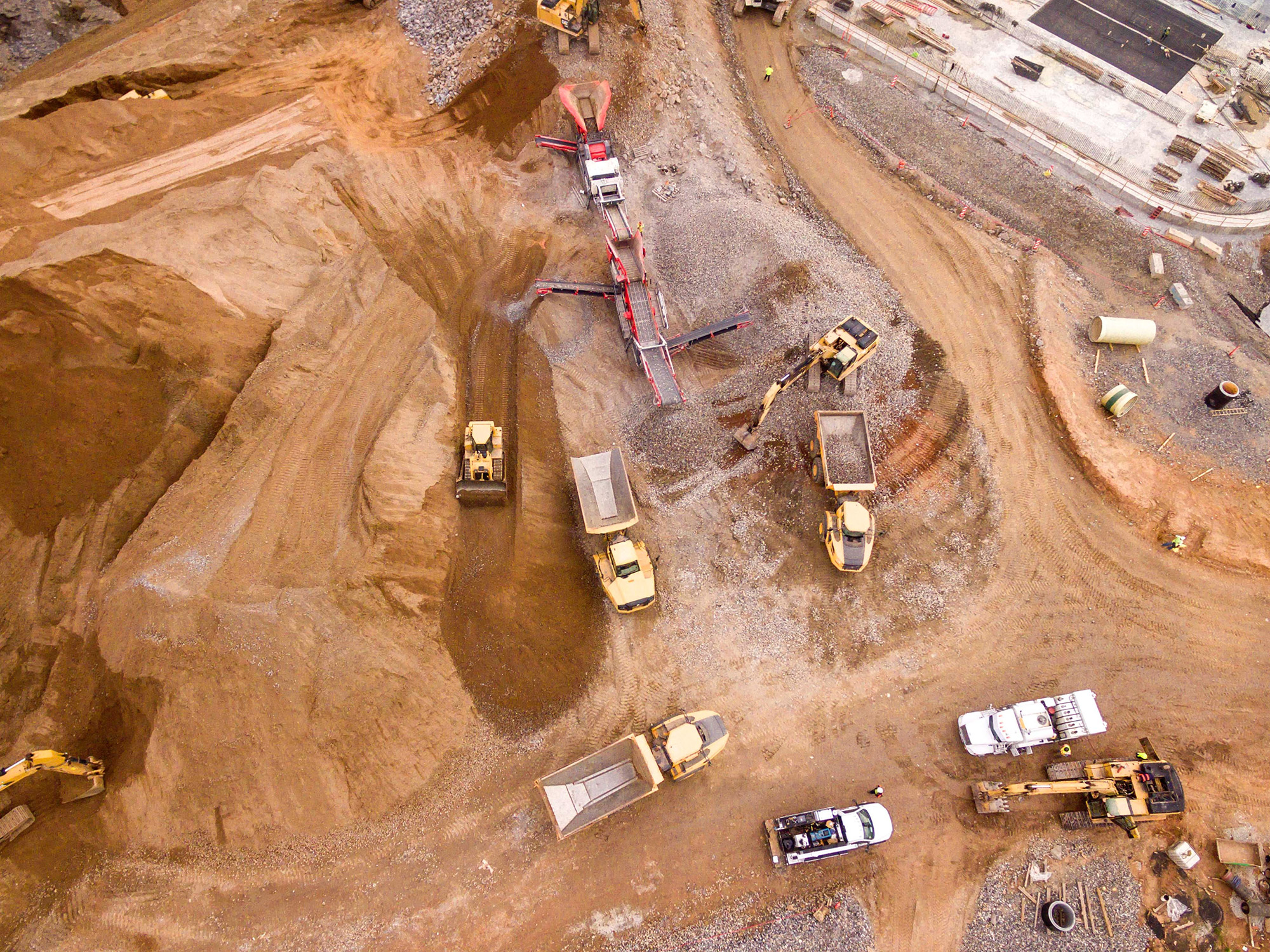
Is there any use for surplus clay from construction sites as landfills fill up?

Utilising surplus clay from construction sites
clay, infrastructure, mass economy, construction sites, aggregate, thermal treatment, recycled lightweight expanded clay aggregate, aggregate products, waste heat, production side streams
We studied the use of clay as a component in an aggregate product that could be used in land development while reducing the climate impact of construction. The use of clay as a production material could potentially reduce emissions and costs caused by the transportation of clay and production of virgin materials for construction.
- Supply and demand
The profitability of using clay as a raw material is primarily determined by the market potential of the product or products and the cost structure of the production plant. Surplus clay as a raw material is practically free, and directing the currently levied landfill gate fees differently could serve as an incentive for using clay as a raw material in production.
- Environmental permits
The surplus clay from construction sites is classified as waste if it is not assigned to be used for something else. This classification of clay as waste can be prevented by conducting relevant research and planning in advance, but soil could be used much more efficiently if clay that has already been dug up could also be reclassified.
- Cooperation
The key to the successful use of clay is to rethink established practices in “ecosystems” where operators in different sectors can collaborate to develop opportunities for business around circular economy.
This solution is right for you if
- you work with geotechnics or mass coordination;
- you are a developer in an area with a large number of clay pits (capital and coastal regions) and a fast growing city with many construction projects; or
- you plan business operations that use industrial side streams and waste heat.
BASIC FACTS
- The location of the industrial area. Construction site, landfill. Concept implemented by the city of Espoo and its Public Works Department and Environment Centre. Ramboll acts as consultant.
- Duration: from October 2020 onwards. The study on clay is ongoing as a collaborative development effort coordinated by the Espoo Public Works Department.
- The city of Espoo provides the framework for the new circular economy-based business and brings together expertise, market knowledge and different interest groups.
The majority of the soil brought to the Kulmakorpi landfill is clay
Transferring surplus clay from construction sites to landfills creates both costs and emissions. Within our project, Espoo has tried to find a solution to the problem by looking into ways to process surplus clay produced across the capital region into a lightweight expanded clay aggregate. One of the central themes of circular economy is resource efficiency, which means the most efficient possible use and reuse of exiting materials. By using surplus clay, we can prevent the acquisition of virgin materials and the resulting climate and environmental impacts.
Our study on clay included basic research, test-baking clay from Espoo, a workshop and final report
In the study, the potential of clay as a raw material was examined while taking into account both production factors and market potential. The study examined, for example, the characteristics of clay with regard to thermal processing, potential forms of production and energy sources, applications for use and market potential.
Preliminary research consisted of expert interviews and discussions. The actual study included the examination of data and a workshop. During the workshop, the results from the preliminary research were further discussed, the Åbo Akademi University presented the results and conclusions of their thermal treatment testing, interest in the topic among operators in the industry was reviewed and knowledge and experience in the use of surplus clay was gathered from interest groups.
The thermal processing methods of clay are based on drying and burning. The treatment temperature and the physical and chemical properties of clay determine the properties of the final product. The expansion of clay is essential in the production of products such as lightweight expanded clay aggregate. The properties indicating expansion potential were found to include clay content, water content, dry unit weight and the quantity of organic material. Preliminary research on clay plays an important role in identifying the clay types suitable for production and ensuring smooth further processing. Preliminary research should be included in construction planning as early in the process as possible.
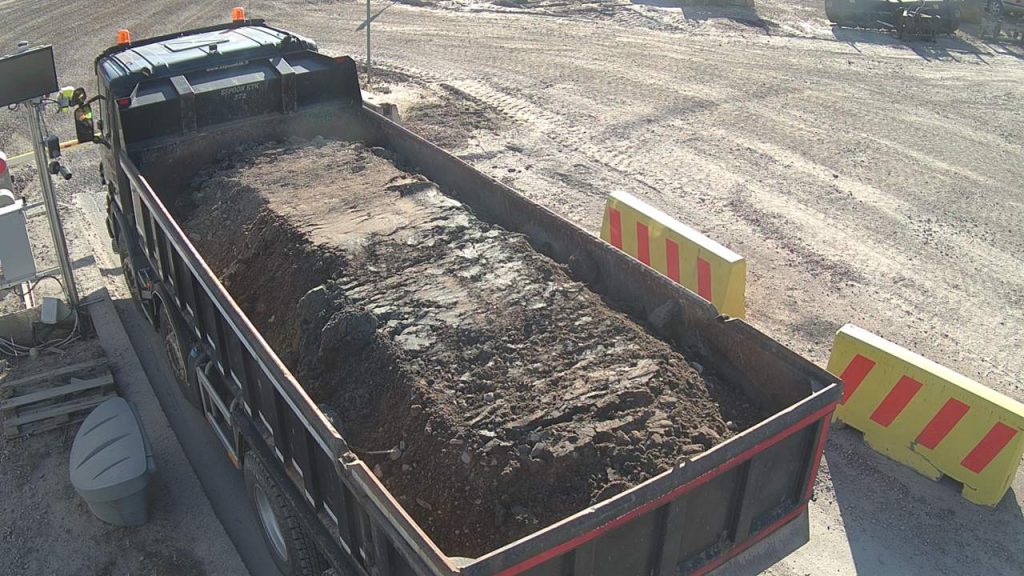
The market potential of a product is based on demand, i.e. the application potential and price in relation to similar products
Recycled lightweight expanded clay aggregate production can be divided into three “production lines”: 1) recycled lightweight expanded clay aggregate which does not meet the requirements of traditional lightweight expanded clay aggregates; 2) clay aggregate from crushed “burnt” clay; and 3) embankment clay, which is dried clay. Clay aggregate and embankment clay are terms used for the purpose of the study and they do not correspond with any official classification or existing products. This type of product would be used like stone aggregate and is in competition with virgin stone aggregate and some recycled materials that are typically low-cost materials. This means that any new product must either have properties that the competing materials do not have or must be cheaper.
The use of surplus clay, or any other recycled materials, requires communication across different sectors and extensive prior research
Our study on clay provides a preliminary overview of the potential of surplus clay as a raw material across the capital region. Research on the suitability of local clay types for thermal treatment provides basic information on the properties of these clays but a more detailed analysis of production or production potential requires further examination and studies. The use of clay in several different production lines or transportation of suitable clay raw material to an aggregate plant require further investigation. The discussions sparked by our study are the primary medium for exploring alternatives, altering practices identified as preventing the use of surplus clay and integrating resource sustainability as part of the construction industry.
With the current cost structure, producing recycled lightweight expanded clay aggregate or a similar product is more expensive than acquiring virgin stone aggregate. The cost structure of an aggregate product depends on how the costs of other uses of surplus clay are taken into account and how much saving natural materials and recycling are valued. Carbon dioxide emissions from materials may become a significant factor in procurement alongside cost and technical suitability. However, before the current conditions change, public operators play a key role in enabling the use of clay and providing potential sites for applications.

TAKE-HOME MESSAGES
- In order to launch the production of clay aggregate, we need a collaborative ecosystem in which operators in different sectors develop business opportunities around circular economy together.
- The profitability of using clay as a raw material in production is primarily determined by the market potential of the product or products and the cost structure of the production plant.
- In future procurements, the carbon footprint of products may become the decisive factor alongside cost.
- In addition to permits, such as environmental permits, the classification of clay as waste is a significant factor affecting the planning of production.
“When procurement decisions are based on CO2 emissions, the production of recycled aggregates can become profitable. For as long as money is the priority, public operators have a key role in enabling the use of clay.”
— Workshop participant



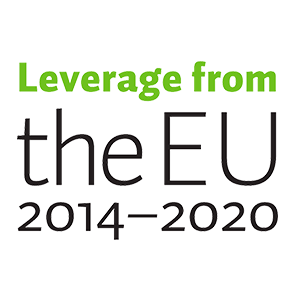
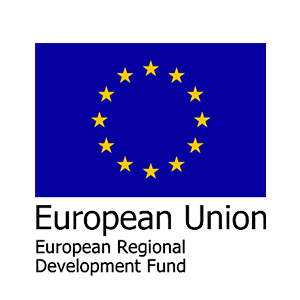
 VTT kehittää Helsingin, Espoon, Vantaan ja Turun yritysalueille vähähiilisiä toimintatapoja
VTT kehittää Helsingin, Espoon, Vantaan ja Turun yritysalueille vähähiilisiä toimintatapoja